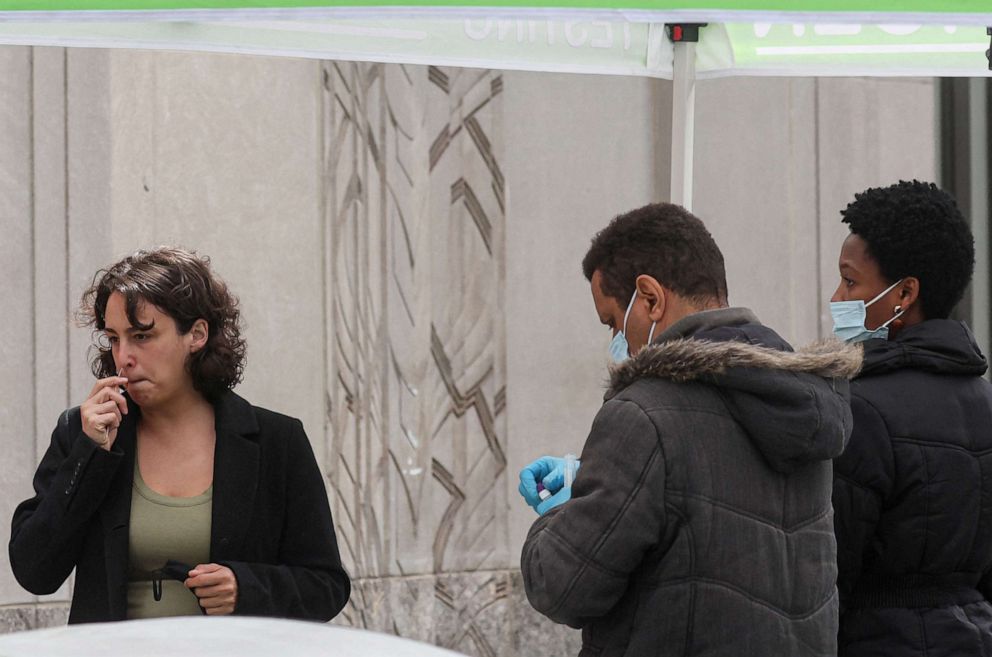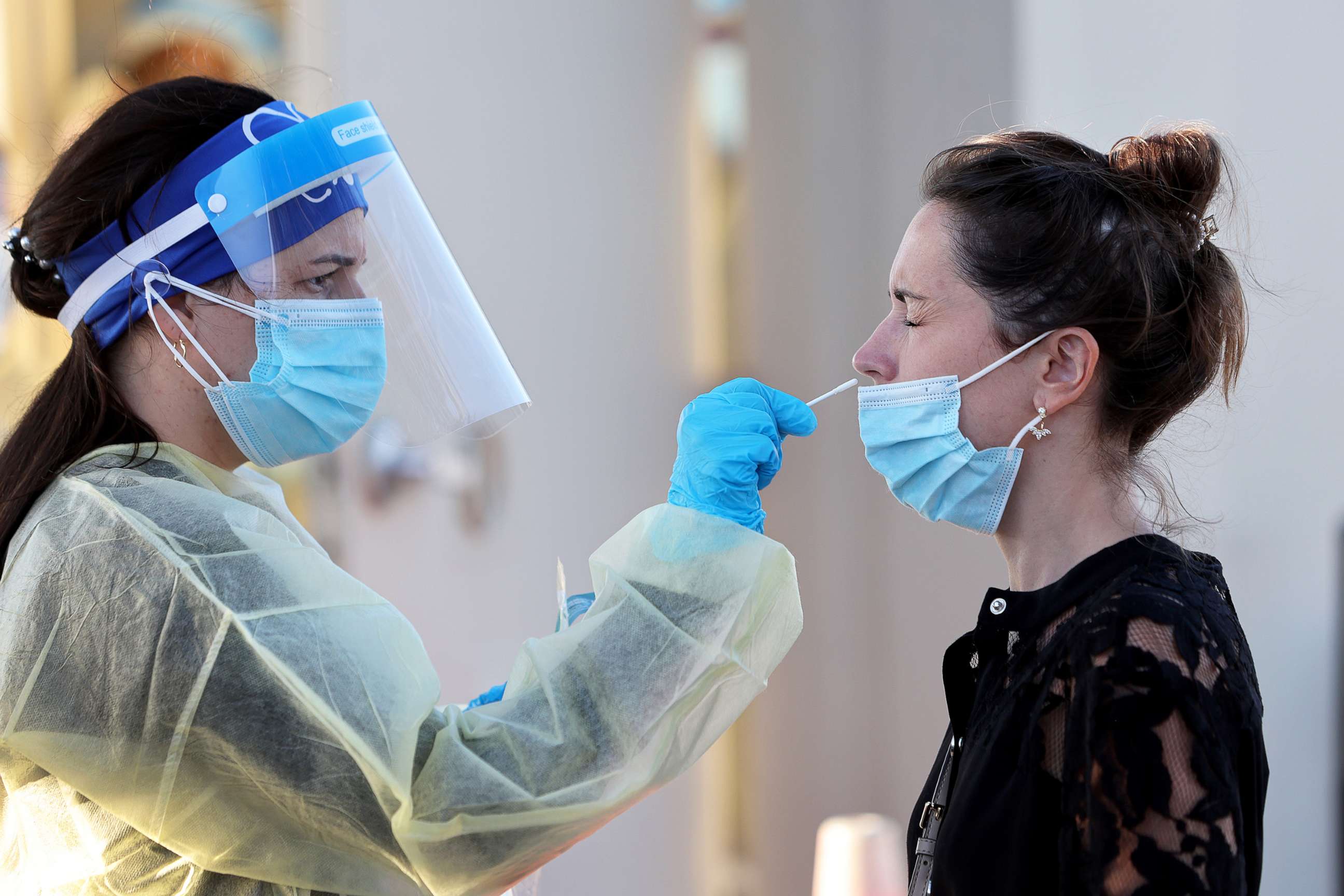When will we know if COVID is seasonal?
COVID infection is likely headed toward seasonality, but it's not there yet.
This is a Medpage Today story.
COVID-19 may indeed become a seasonal illness with predictable patterns of infection -- but it's not there yet, epidemiologists and infectious disease experts say.
While the virus has had some element of seasonality since it first came into the world more than 2 years ago, other factors -- including variant evolution, population immunity, and behavioral changes -- have made seasonality less apparent.
The disease may fall into a more predictable rhythm once the population has more immunity and as people go back to their pre-pandemic lives, but this will likely take a few years, most experts agreed.
"There have just been so many other factors that have been driving spread, that seasonality hasn't been the major factor yet," Dr. Amesh Adalja, of the Johns Hopkins Center for Health Security in Baltimore, told MedPage Today. "But as the population becomes more immune, and people go back to some semblance of what their ordinary life was pre-pandemic, I think the seasonality will become more apparent."
Dr. Michael Osterholm, director of the Center for Infectious Disease Research and Policy at the University of Minnesota in Minneapolis, noted that the U.S. has seen significant COVID activity in multiple seasons, sometimes with major peaks, such as what occurred with Delta in the late summer and early fall of 2021.
Surges, he said, "have really been tied more to when variants occur."
Add to that the fact that immunity against infection wanes for both the previously infected and the vaccinated, Osterholm said, and that makes COVID surges much less predictable than the virus the world has wanted it to become since the beginning -- influenza.

Hoping for flu's predictability
The hope around COVID having "seasonality" may have something to do with flu's predictability, experts said. Each year, the U.S. can expect relatively low mortality and morbidity -- anywhere between 12,000 and 60,000 deaths, and 140,000 and 810,000 hospitalizations, according to the CDC.
But it's just not possible to "fit the square peg of SARS-CoV-2 into the round hole of influenza just yet," said Dr. James Lawler, of the University of Nebraska Medical Center's Global Center for Health Security in Omaha.
Looking for insights into SARS-CoV-2 evolution in influenza's pattern of shifting and drifting isn't possible because they're "vastly different viruses," he noted.
Influenza drifts frequently, requiring annual vaccination, but it shifts -- developing larger changes that can lead to more virulent, pandemic influenza causing greater mortality -- less frequently.
"With influenza, you get swapping of different segments that creates massive differences in surface protein," Lawler said. "SARS-CoV-2 doesn't have the capability for such large-scale reassortment. However, it is very slippery, and it mutates rapidly."
"Whether you call it shift, or drift, or continuous evolution of the virus, it doesn't seem to be slowing down," he added.
Experts agreed that evolution of SARS-CoV-2 actually appears to be accelerating, given what's been observed with the evolution of variants in the Omicron family.
"If you look at South Africa, the rate of new epidemic waves have shortened since the beginning of the pandemic," Lawler said. "They had the Omicron surge in November/December, and now, 5 months later, they have a BA.4/5 surge."
That could indicate that variants will evolve at a more rapid rate, which may not correlate with the seasons. That's happening now in the northeastern U.S., where BA.2.12.1 has started to take off, and is contributing to a surge that was not seen this time last year.
"Right now, we have a highly infectious virus, and we have waning immunity," said Dr. Ali Mokdad, of the Institute for Health Metrics and Evaluation at the University of Washington in Seattle. "So people are susceptible to the virus even in summer."
That doesn't necessarily mean we'll see more virulent disease or, if making the maligned comparison to flu, a big "shift" that causes a huge surge in hospitalizations and death, Adalja said. Evolution would likely favor more transmissible or more immune-evasive variants, but not a variant that "keeps people in bed," he said.
"A person in bed is a lost opportunity to infect people," he noted. "You want people at school or work."
In addition, substantial T-cell immunity from prior infection or vaccination, he added, should continue to protect against severe disease.
"I don't think that immune-evasive variants can erase all the protection that the immune system gives you," he said. "It might be able to get around some of the protection that antibodies confer and cause infections, but to cause severe disease is a much higher ask."
If the Alpha variant was a "shift" from the original strain, Delta a shift from Alpha, and Omicron a shift from Delta, Adalja said, it's possible Omicron may represent a transition to "drift," which could make it behave more like the four other coronaviruses that currently circulate in the U.S.

Learning from other coronaviruses
Those four viruses have seasonality and may be a better model for the future of COVID-19 in the U.S., Adalja said. They circulate throughout the year at relatively low levels, but cause peaks of infection in the winter months, as substantial parts of the country head indoors to escape the cooler weather.
"We've already seen some element of seasonality [with SARS-CoV-2], but it's not as evident as it is with the other four coronaviruses that circulate every year," he said. "That may be due to the fact that until recently, there was very little immunity in the population, and that maybe prevented the stark seasonality from being apparent."
Those coronaviruses are also capable of reinfecting people, he noted. That means SARS-CoV-2 is most likely "going to continue to evolve and continue to become immune evasive in order to reinfect us, just like other members of the coronavirus family do."
Lawler agreed, pointing out that the comparison could have helped health officials better temper expectations around COVID vaccines.
"We do not have lifelong immunity to any of these coronaviruses, and that probably should have given us a pretty good clue that we were not going to achieve that with SARS-CoV-2, either from natural infection or from vaccination," he said. "We should have been prepared for this phenomenon of having to get periodically boosted."
"If we had messaged this well from the beginning," he added, "maybe it wouldn't have been such a big deal to people."
In March, CDC Director Dr. Rochelle Walensky said she anticipated that COVID would "probably" become a seasonal virus.
There's no doubt over the last two years that the U.S. saw its highest peaks in winter, in early to mid-January in both 2021 and 2022.
Most experts agree that COVID-19 may be headed toward seasonality. They're just not prepared to say so, definitively, as SARS-CoV-2 has thrown so many curveballs in the past.
Osterholm noted that six months ago, Omicron had not yet hit U.S. shores.
"We've never seen this subvariant activity with Alpha, Beta, or Delta, so who could have predicted six months ago where we'd be at?" he said. "That's the challenge we have."



